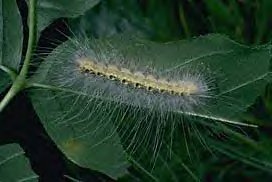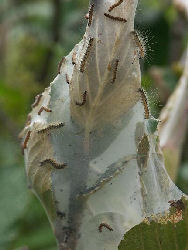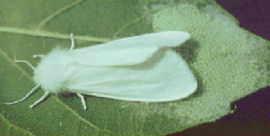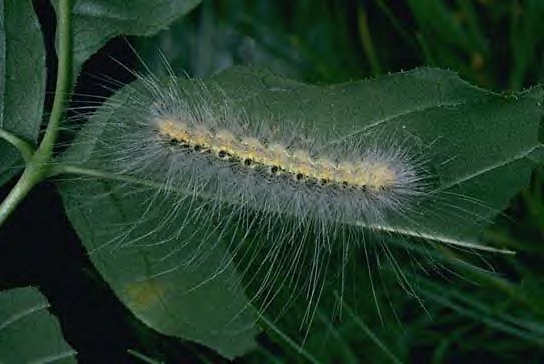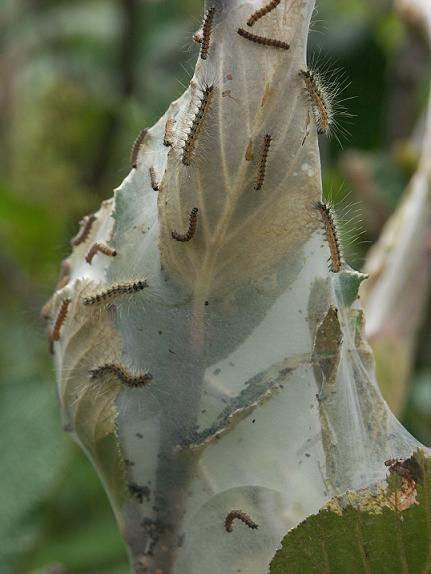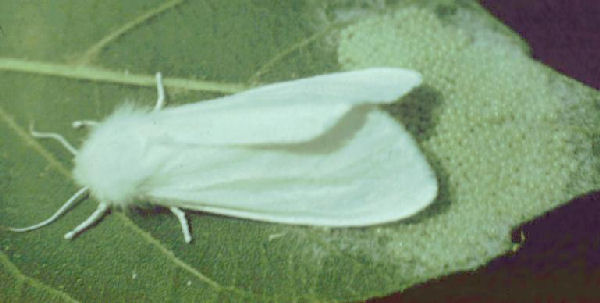Caterpillars and Chrysalises
Description
Caterpillar variably colored, with long whitish to light brown hairs; grows to 1". In late summer makes large gray web; conspicuous in fall.
Discussion
Since the caterpillars of this species, through much of its range, feed on trees mainly in the late summer and fall when leaves are of less importance to the trees themselves, the Fall Webworm is not considered a major pest in the forestry industry. Caterpillar numbers are controlled in most outbreaks by many species of parasitic wasps and flies. Cuckoos are one of the few groups of birds that relish hairy caterpillars such as those of this species.

